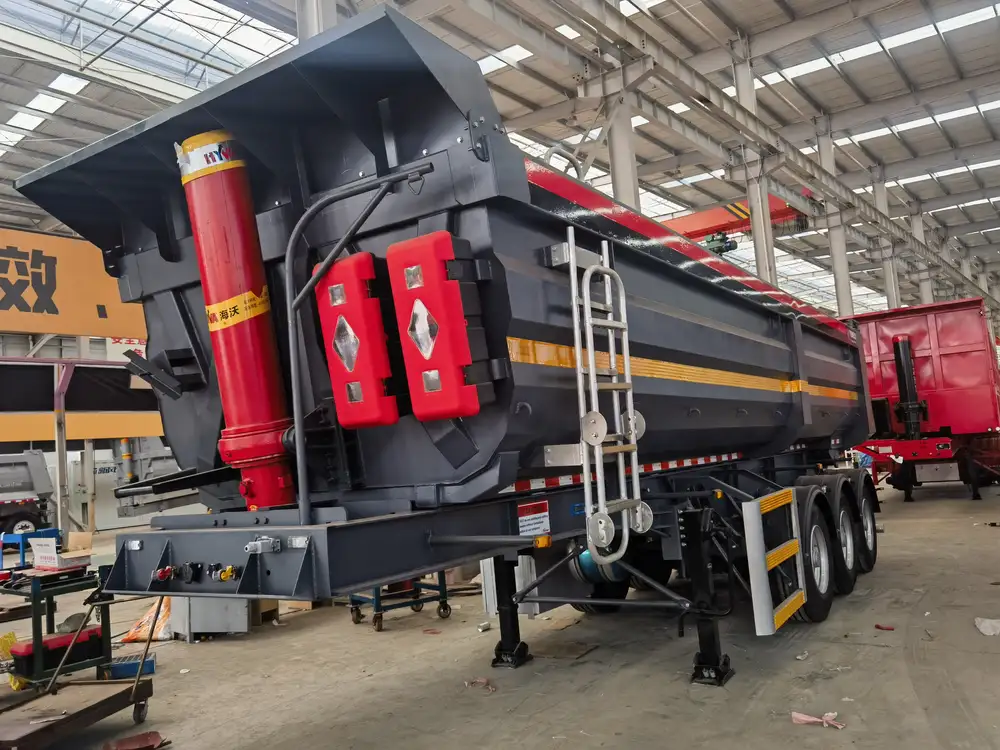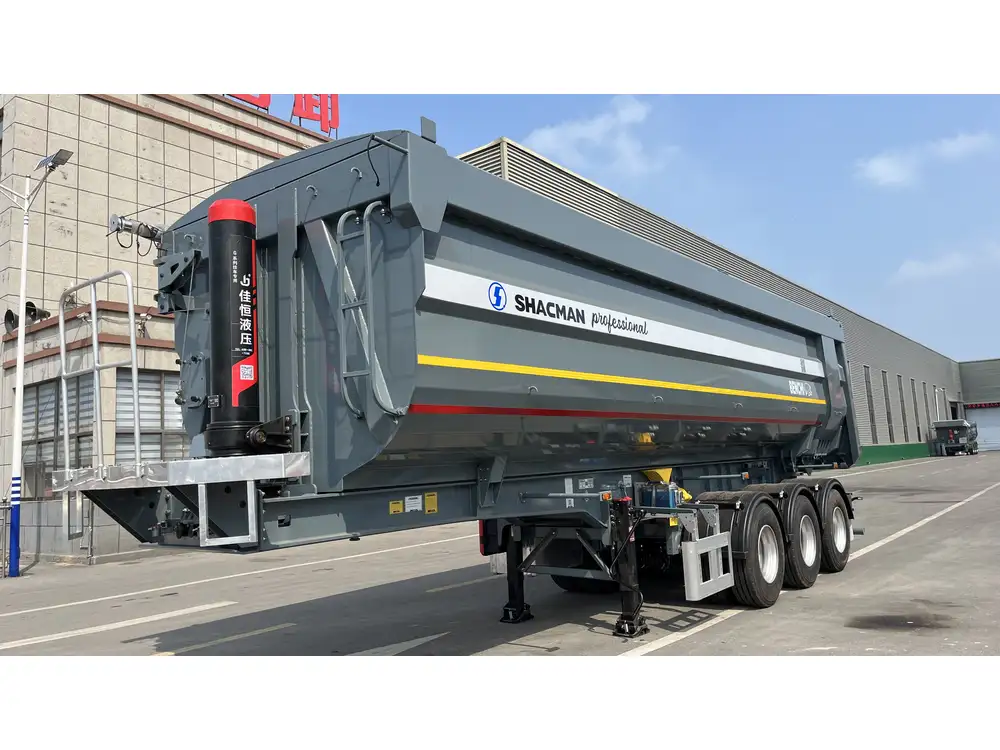Determining the optimal time to retire a semi-trailer is a crucial decision for fleet owners and operators. This article dives deep into the multifaceted considerations surrounding semi-trailer retirement, including age, usage, maintenance costs, market conditions, and more. The aim is to equip decision-makers with the knowledge needed to make increasingly informed choices that could save significant resources in the long run.
Understanding Semi-Trailer Lifespan
Average Lifespan of Semi-Trailers
Semi-trailers are built to endure rigorous conditions; however, their lifespan varies widely based on several factors. Generally, the average lifespan of a semi-trailer ranges from 10 to 15 years. Yet, there are notable exceptions—some trailers may last over 20 years with proper maintenance, while others may need replacement sooner due to heavy usage or poor care.
| Type of Semi-Trailer | Typical Lifespan |
|---|---|
| Dry Van Trailer | 10-15 years |
| Flatbed Trailer | 10-15 years |
| Refrigerated Trailer | 10-12 years |
| Tanker Trailer | 10-15 years |

Factors Influencing Lifespan
Several elements contribute to the effective lifespan of a semi-trailer:
Usage Patterns: Trailers used for long-haul operations typically face more wear than those used regionally.
Maintenance Practices: Regular inspections and timely repairs can extend a semi-trailer’s lifespan significantly. Neglect can lead to catastrophic failures.
Environmental Conditions: Exposure to harsh weather, salt, and pollutants can accelerate deterioration.
Material Quality: The quality of materials and construction methods greatly affects durability.
Load Types: The type and weight of loads carried can influence wear and tear on the trailer.
Technological Advancements: Newer trailers often incorporate lighter materials and better engineering practices, improving lifespan significantly.
Cost-Benefit Analysis of Semi-Trailer Retirement
When contemplating retirement, fleet owners must weigh the financial aspects against operational needs.
Maintenance Costs Over Time
Regular maintenance costs tend to increase as a semi-trailer ages. Consider the following stages:
- Years 1-5: Minimal maintenance costs as the trailer is usually under warranty.
- Years 6-10: Maintenance begins to trend upward; repairs become more frequent due to aging components.
- Years 11-15: Significant costs arise from major components such as brakes or axles needing replacement.
Utilizing a graph like the one below can help visualize this trend.
Years | Maintenance Costs
-------|------------------
1-5 | Low
6-10 | Moderate
11-15 | High
Depreciation Rates
Similar to vehicles, semi-trailers depreciate over time. The depreciation can be linear or accelerated, often peaking between years 4 to 6. Fleet owners should be aware of how depreciation can impact their financial decisions regarding resale value.
| Age of Semi-Trailer | Estimated Resale Value |
|---|---|
| 1 Year | 80% of purchase price |
| 5 Years | 50% |
| 10 Years | 30% |
| 15 Years | 10% |
Signs That Indicate It’s Time to Retire Your Semi-Trailer
Identifying when to retire a semi-trailer is not always intuitive. Keep an eye out for these indicators:
Increased Maintenance Frequency: If repairs are becoming a monthly occurrence, it may be time for replacement.
Structural Integrity Issues: Frame cracks, rust, and other critical structural concerns often warrant retirement.
Performance Decline: Reduced fuel efficiency and handling problems indicate that the trailer may be reaching its limits.
Regulatory Non-compliance: Failing to meet federal or state regulations can necessitate an upgrade.
Market Conditions: If used semi-trailer prices are favorable, it might be advantageous to sell older units sooner than later.
Emotional and Psychological Factors
The decision to retire a semi-trailer may also stem from emotional considerations:
- Owner Fatigue: Continually managing an aging fleet can lead to operational fatigue, prompting the need for an overhaul.
- Operational Consistency: Newer trailers bring technological efficiencies, improving day-to-day business performance.

Financial Implications of Semi-Trailer Retirement
While making a decision about semi-trailer retirement, a comprehensive approach to financial implications should be taken into account:
Budgeting for Retirement and Replacement
Budgeting for a new semi-trailer involves more than just the purchase price. Consider these additional costs:
Insurance premiums: Newer models often enjoy lower premiums due to enhanced safety features.
Financing Options: Research available financing plans. Many manufacturers offer competitive financing solutions tailored to fleet operators.
Training Costs: Investing in training for operators on new technologies may also be necessary.
Potential Resale Value
Understanding the resale market dynamics enables effective planning:
Timing the Sale: Selling just before major repairs can maximize resale value.
Market Trends: Pay attention to economic indicators that influence the demand for used trailers.

Future Trends Impacting Semi-Trailer Retirement
The commercial trucking industry is in perpetual evolution. Several future trends might affect retirement decisions:
Green Technology: Electric and hybrid trailer innovations may make your current fleet obsolete sooner.
Autonomous Vehicles: As autonomous trucking becomes a reality, investing in high-tech trailers could become a necessity.
Regulatory Changes: Expecting upcoming standards and regulations could dictate retirement timing for compliance.
Supply Chain Dynamics: Global trade conditions frequently influence the operational lifespans of semi-trailers and may necessitate timely retirement.
Essential Considerations Before Making the Decision
Before reaching a conclusion, fleet operators should systematically analyze several key aspects:
Evaluation of Your Current Fleet
Assess your entire fleet rather than considering individual trailers. This provides a holistic view of which units are most cost-effective to retire.
- Inventory Aging: How old is each unit?
- Usage Patterns: Are specific trailers underutilized?

Consultation with Experts
Bringing in experts for an impartial analysis can yield valuable insights:
- Mechanical Engineers: They can assess the technical condition of your units.
- Financial Advisors: Consulting about the financial ramifications could enhance transparency.
Implementing a Retirement Plan
Once a decision is made, creating a structured retirement plan can streamline the process and provide clarity.
- Timeline: Set clear dates for retirement and replacement procedures.
- Exit Strategy: Determine how to handle the retirement of individual units—sale, trade-in, or scrapping.
Conclusion: Making the Right Choice for Your Fleet
Deciding the best age to retire a semi-trailer is not merely a matter of age; it involves meticulous analysis of performance, financial implications, market conditions, and technological advancements. Being proactive rather than reactive will save time, resources, and help you maintain a competitive edge in the industry. Each fleet is unique, but a calculated approach will consistently yield the best long-term outcomes, allowing operators to maximize efficiencies while minimizing costs.



